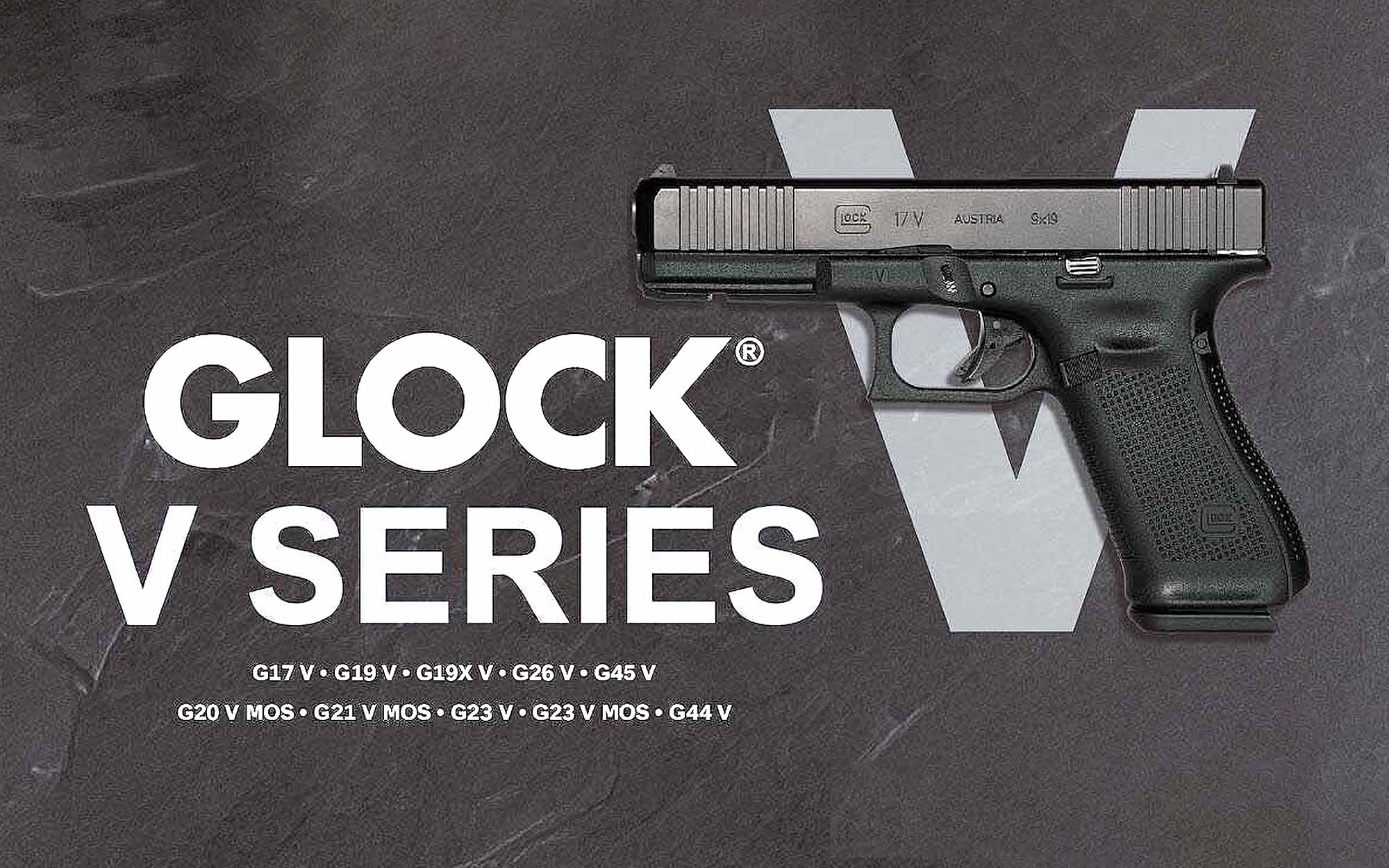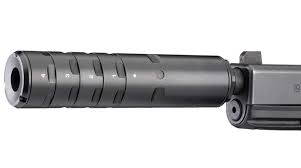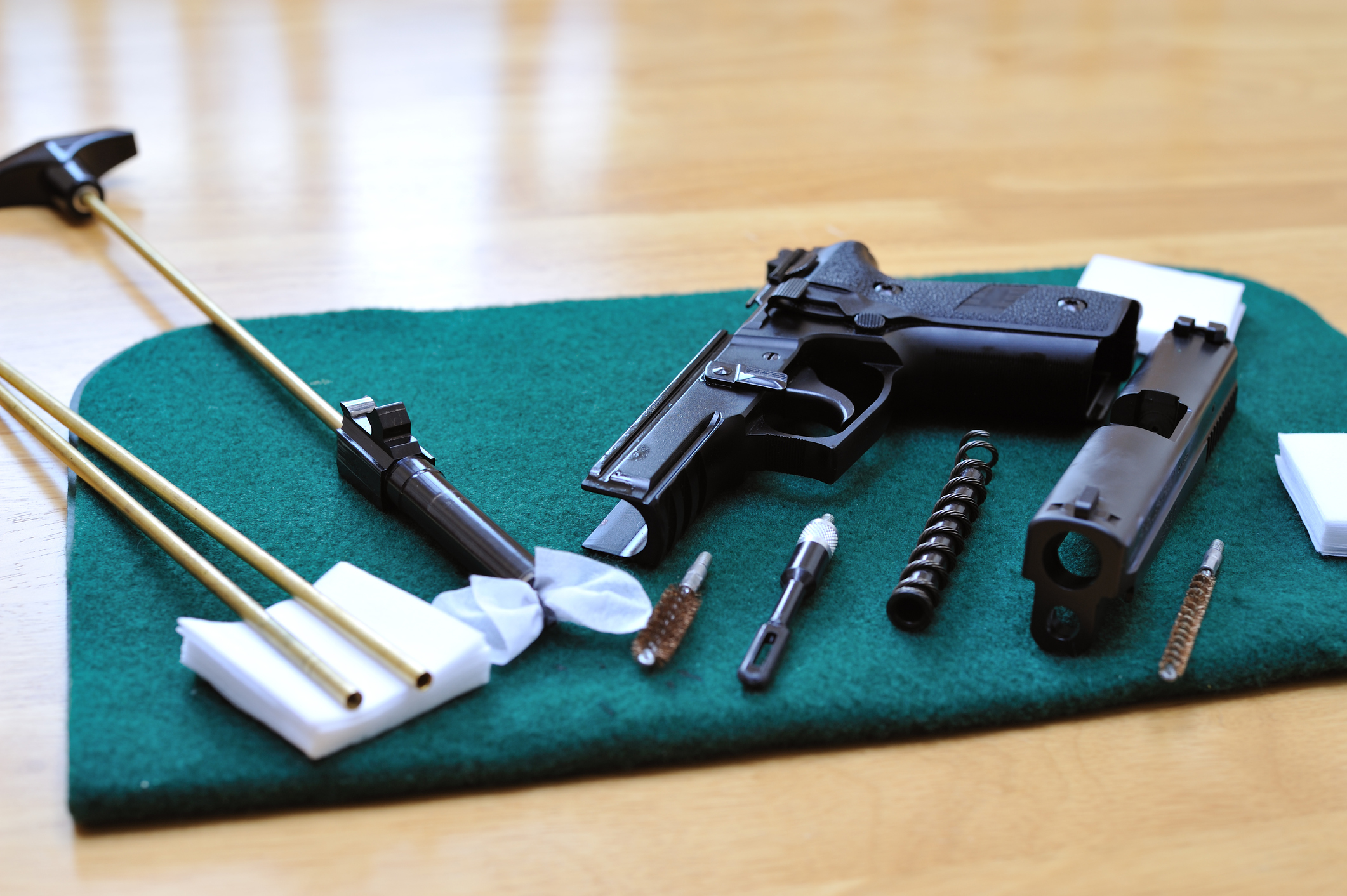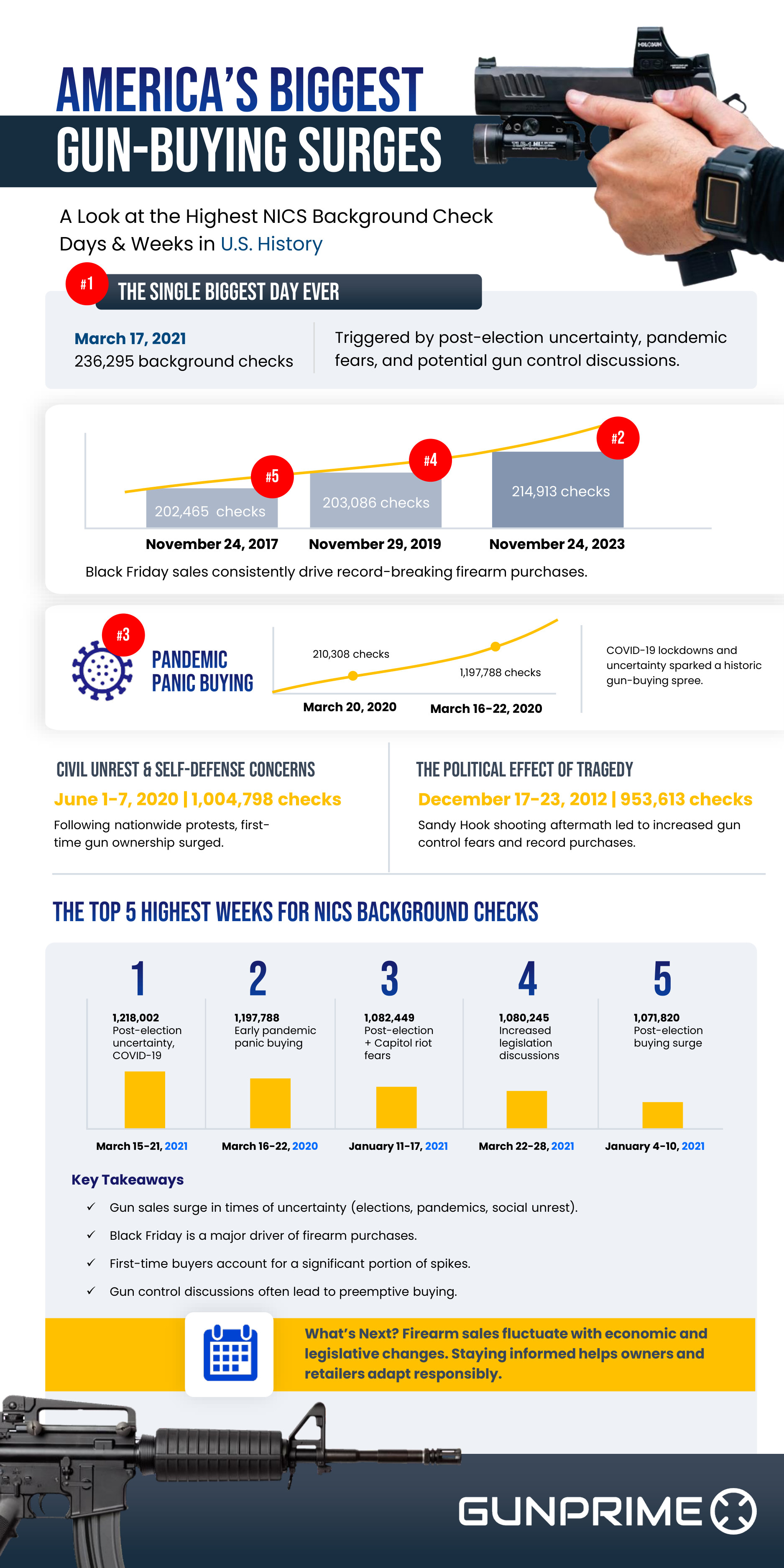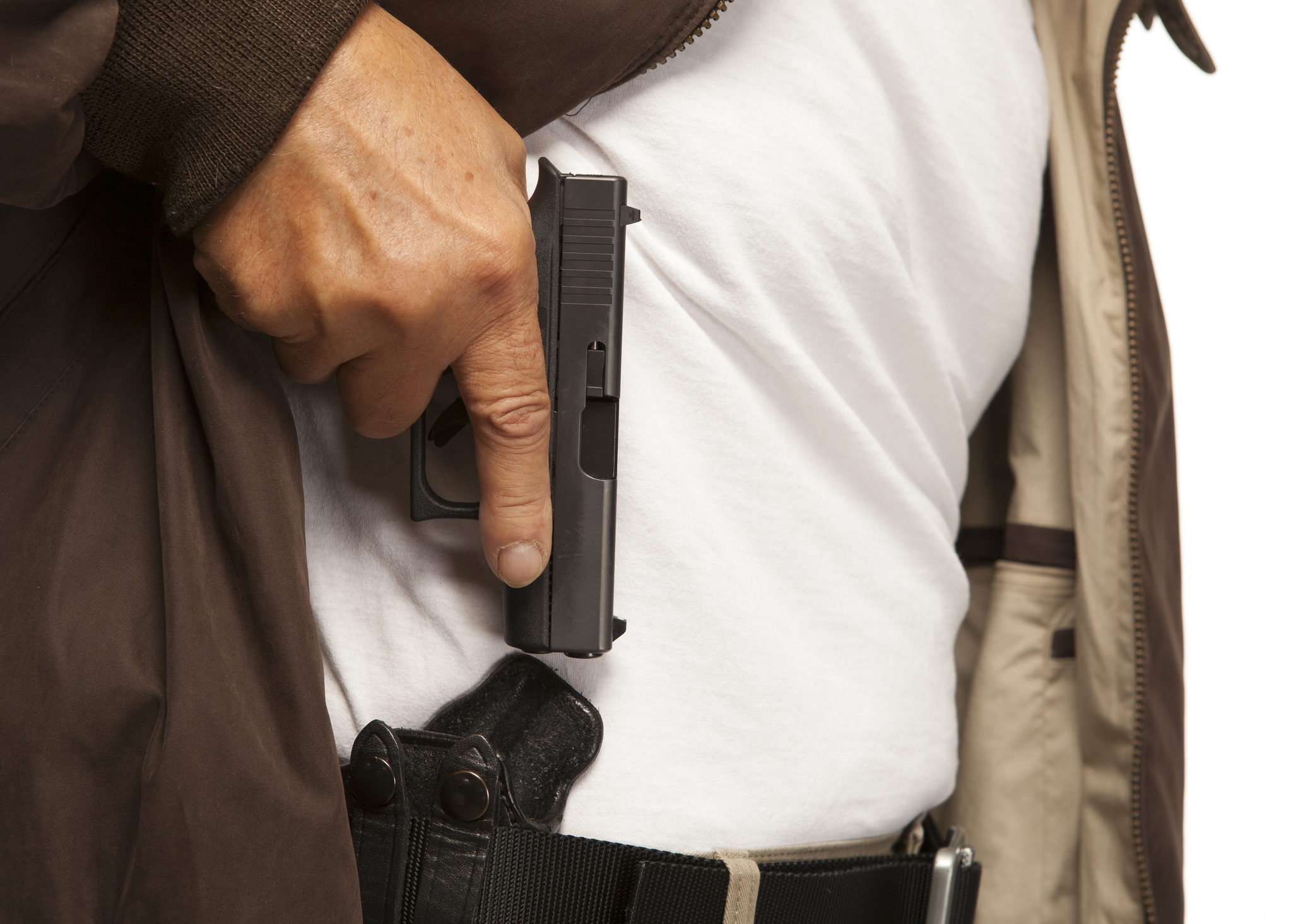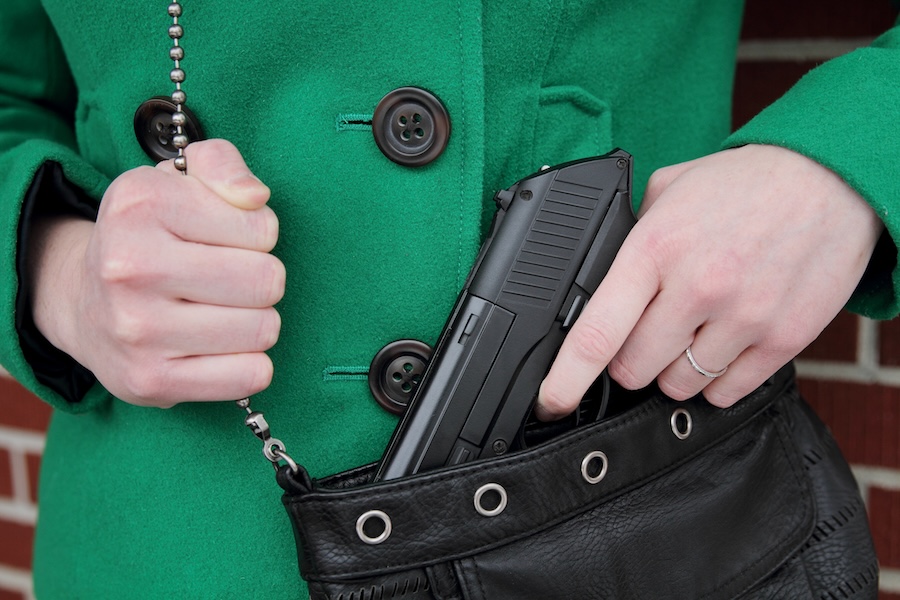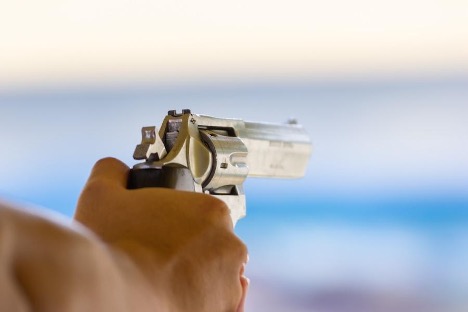An article by GunPrimeLLC
An Ultimate Guide to Deer Hunting Rifles
When it comes to deer hunting, having the right rifle can make all the difference. A well-chosen deer hunting rifle can enhance your accuracy, range, and overall hunting experience. But with so many options available, it can be overwhelming to know where to start.
In this ultimate guide to deer hunting rifles, we will break down the basics of what makes a good rifle, how to choose the right one for you, and how to properly maintain and improve your shooting skills. Whether you're a seasoned hunter looking to upgrade your gear or a beginner just starting out, this guide will provide you with the knowledge and insights you need to make an informed decision.
We will start by understanding the key factors that make a good deer hunting rifle. We'll explore the importance of accuracy, range, weight, portability, caliber selection, reliability, durability, and ease of use. By understanding these factors, you'll be able to prioritize and choose a rifle that best suits your needs and preferences.
Next, we'll dive into how to choose the right deer hunting rifle for you. We'll discuss how to assess your hunting style and environment, consider your experience level, evaluate your budget, and research different brands and models. By considering these factors, you'll be able to narrow down your options and find a rifle that is tailored to your specific requirements.
Maintaining your deer hunting rifle is crucial to ensure its longevity and optimal performance. We'll provide you with tips and guidelines on proper cleaning and storage, regular inspection and servicing, and important safety measures to follow. By taking care of your rifle, you'll be able to rely on it for many successful hunting seasons to come.
Lastly, we'll explore how you can improve your shooting skills. We'll discuss the importance of practicing your aim, understanding bullet trajectories, and adapting to different weather and environmental conditions. By honing your shooting skills, you'll increase your chances of a successful and ethical hunt.
Whether you're a dedicated deer hunter or just starting out, this ultimate guide to deer hunting rifles will equip you with the knowledge and tools you need to make the most out of your hunting experience. So grab your coffee, settle in, and let's dive into the world of deer hunting rifles.
Understanding the Basics: Introduction to Deer Hunting Rifles
Deer hunting rifles are specifically designed firearms that are used by hunters to pursue and harvest deer. These rifles play a crucial role in ensuring a successful and ethical hunt, as they provide hunters with the necessary accuracy, range, and power to effectively take down a deer.
In this section, we will cover the fundamental aspects of deer hunting rifles, including their purpose, components, and key features. By understanding these basics, you will gain a solid foundation to help you make informed decisions when selecting a deer hunting rifle.
Buy Hunting Rifles Now
Purpose of Deer Hunting Rifles
Deer hunting rifles are primarily used for pursuing and harvesting deer. Unlike other types of rifles, such as those used for target shooting or self-defense, deer hunting rifles are specifically designed to deliver the necessary power and accuracy to effectively take down a deer.
Components of a Deer Hunting Rifle
A typical deer hunting rifle consists of several key components, each playing a vital role in the rifle's overall performance. These components include:
- Barrel: The barrel is the long, cylindrical metal tube through which the bullet travels. It determines the rifle's accuracy, range, and overall performance.
2. Action: The action refers to the mechanism by which the rifle loads, fires, and ejects cartridges. Common types of actions include bolt action, lever action, semi-automatic,and pump action.
3.Stock: The stock is the part of the rifle that the shooter holds and shoulders. It provides stability and support while aiming and firing the rifle.
4.Trigger: The trigger is the mechanism that releases the firing pin to strike the primer of the cartridge, initiating the firing sequence.
Magazine: The magazine is the storage area within the rifle that holds the cartridges. It feeds the cartridges into the chamber for firing.
Key Features of Deer Hunting Rifles
Several key features set deer hunting rifles apart from other types of firearms. These features are specifically designed to optimize the rifle's performance for hunting deer. Some of the key features include:
- Optics: Many deer hunting rifles come equipped with optics such as scopes or sights, which enhance accuracy and improve target acquisition.
- Caliber: The caliber refers to the diameter of the bullet or cartridge. Different calibers offer varying levels of power, recoil, and effectiveness for deer hunting.
- Safety Mechanisms: Deer hunting rifles often include safety features such as manual safeties and trigger locks to prevent accidental discharge and ensure safe handling.
- Sling Attachments: Sling attachments allow hunters to carry their rifles comfortably and securely while keeping their hands free for other tasks.
- Recoil Management: Some deer hunting rifles incorporate features such as recoil pads or muzzle brakes, which help manage the recoil generated upon firing.
By understanding the purpose, components, and key features of deer hunting rifles, you will be better equipped to evaluate and choose the right rifle for your hunting needs. In the next section, we will delve deeper into what makes a good deer hunting rifle, exploring factors such as accuracy, range, weight, caliber selection, reliability, and ease of use.
What Makes A Good Deer Hunting Rifle
A good deer hunting rifle is essential for a successful and enjoyable hunting experience. In this section, we will explore the key factors that make a deer hunting rifle stand out from the rest. By understanding these factors, you will be able to make an informed decision and choose a rifle that best suits your needs and preferences.
Accuracy and Range
One of the most critical factors in a deer hunting rifle is its accuracy. The ability to consistently hit the target at various distances is crucial for an ethical and effective hunt. Look for rifles that have a reputation for excellent accuracy, as well as features such as a quality barrel, a reliable action, and a solid trigger.
Range is also an important consideration. Depending on your hunting environment, you may need a rifle with a longer effective range. Factors such as barrel length, bullet velocity, and cartridge selection can all contribute to the rifle's range capabilities.
Weight and Portability
Consider the weight and portability of a deer hunting rifle when making your choice. While a heavier rifle may offer more stability and reduce recoil, it can be cumbersome to carry for extended periods. On the other hand, a lighter rifle may be easier to carry but could be more susceptible to recoil.
Think about your hunting style and terrain. If you plan to cover long distances on foot or hunt in rugged environments, a lighter and more portable rifle may be more suitable for you.
Caliber Selection
Choosing the right caliber for your deer hunting rifle is crucial. The caliber refers to the diameter of the bullet or cartridge, and different calibers offer varying levels of power, recoil, and effectiveness for hunting deer.
Factors to consider when selecting a caliber include the size of the deer you plan to hunt, the range at which you will be shooting, and your own comfort level with recoil. Popular calibers for deer hunting include .243 Winchester, .270 Winchester, .30-06 Springfield, and .308 Winchester, among others.
Reliability and Durability
Reliability and durability are key attributes of a good deer hunting rifle. You want a rifle that will perform consistently, even in adverse weather conditions or after extended periods of use.
Look for rifles with a reputation for reliability, featuring high-quality materials and solid construction. Additionally, consider factors such as resistance to rust and corrosion, as well as the availability of spare parts and customer support.
Ease of Use
An often overlooked aspect of a good deer hunting rifle is its ease of use. This includes factors such as the rifle's ergonomics, ease of operation, and user-friendly features. A rifle that feels comfortable in your hands, has intuitive controls, and allows for quick and easy reloading can significantly enhance your hunting experience.
Consider features such as adjustable stocks, user-friendly safety mechanisms, and smooth bolt actions. Additionally, think about how easily you can clean and maintain the rifle, as this can impact its overall usability.
By considering factors such as accuracy, range, weight, portability, caliber selection, reliability, and ease of use, you can determine what makes a good deer hunting rifle for your specific needs. In the next section, we will delve into the process of choosing the right deer hunting rifle for you, taking into account your hunting style experience level, budget, and brand preferences .
How to Choose the Right Deer Hunting Rifle for You
Choosing the right deer hunting rifle is a personal decision that depends on various factors such as your hunting style, experience level, budget, and brand preferences. In this section, we will guide you through a step-by-step process to help you make an informed choice.
Assess Your Hunting Style and Environment
Consider your hunting style and the environment in which you will be hunting. Are you primarily a stand hunter, sitting in a fixed location and waiting for deer to come within range? Or do you prefer stalking and actively pursuing deer over long distances?
The type of hunting you engage in will influence the characteristics you should prioritize in a rifle. For stand hunting, factors such as accuracy, range, and stability may be more important. On the other hand, if you prefer stalking, a lighter and more maneuverable rifle may be preferable.
Additionally, consider the terrain and typical shooting distances in your hunting area. If you hunt in open fields or wide expanses, you may need a rifle with a longer effective range. Conversely, if you hunt in dense woods or brushy areas, a more compact and maneuverable rifle may be ideal.
Consider Your Experience Level
Your experience level as a hunter should also be taken into account when choosing a deer hunting rifle. If you are a beginner or have limited experience, it is generally recommended to start with a rifle that is easy to handle and forgiving of mistakes.
Bolt-action rifles are a popular choice for beginners due to their simplicity, reliability, and ease of use. They often have smooth actions, adjustable triggers, and are available in a wide range of calibers suitable for deer hunting.
Experienced hunters may have different preferences and may be comfortable with more advanced features or specific rifle models. However, regardless of your experience level, it is important to choose a rifle that you feel confident and comfortable shooting.
Evaluate Your Budget
Establishing a budget is an essential step in the rifle selection process. Determine how much you are willing to spend on a deer hunting rifle, keeping in mind that the cost can vary significantly depending on brand, model, and additional features.
Consider not only the cost of the rifle itself but also any additional accessories or optics you may need. It is often recommended to allocate a portion of your budget for a quality scope or sights, as they can greatly enhance your accuracy and hunting success.
Remember that a higher price does not always guarantee better performance. It is possible to find reliable and effective deer hunting rifles within various price ranges. Research different options, read reviews, and seek advice from experienced hunters to find the best value for your budget.
Research Brands and Models
Take the time to research different brands and models of deer hunting rifles. Each brand has its own reputation for quality, reliability, and customer support. Reading reviews and seeking recommendations from experienced hunters can provide valuable insights into the performance and durability of different rifles.
Consider visiting local firearm stores or attending hunting expos to handle and test different rifle models. This will allow you to assess the ergonomics, weight, and overall feel of the rifles before making a decision.
Additionally, take into account the availability of accessories, spare parts, and customer support for the chosen brand. This is important for future maintenance and potential upgrades to your rifle.
By assessing your hunting style and environment, considering your experience level, evaluating your budget, and researching different brands and models, you will be well-equipped to choose the right deer hunting rifle for you. In the next section, we will explore the importance of maintaining your rifle to ensure its longevity and optimal performance.
Maintaining Your Deer Hunting Rifle
Maintaining your deer hunting rifle is crucial to ensure its longevity and optimal performance. A well-maintained rifle not only functions reliably but also improves accuracy, safety, and overall hunting experience. In this section, we will provide you with essential tips and guidelines for proper cleaning, storage, inspection, servicing, and safety measures.
Proper Cleaning and Storage
Regular cleaning is vital to remove dirt, debris, and moisture that can accumulate in your rifle. Here are some key steps for proper cleaning:
- Unload the rifle and ensure it is not loaded before beginning the cleaning process.
- Disassemble the rifle according to the manufacturer's instructions. Pay close attention to the barrel, action, trigger, and other critical components.
- Use a cleaning rod, bore brush, and cleaning solvent to clean the barrel. Run the brush back and forth several times to remove fouling and residue. Follow up with patches soaked in solvent to further clean the barrel.
- Clean the action, trigger, and other parts using a brush, solvent, and a cloth. Remove any dirt or debris carefully.
- Wipe down the exterior of the rifle with a clean cloth or gun oil to prevent rust and corrosion.
- Reassemble the rifle according to the manufacturer's instructions.
Once your rifle is clean, proper storage is essential to protect it from damage and maintain its condition:
- Store your rifle in a cool, dry place away from extreme temperatures and humidity.
- Use a quality gun safe or lockable case to prevent unauthorized access and protect your rifle from theft or accidents.
- Consider using a gun sock or silicone-treated gun cloth to provide additional protection against moisture and rust.
Regular Inspection and Servicing
Regularly inspecting your rifle is important to identify any potential issues or wear. Here are some key points to consider:
- Check the barrel for signs of wear, such as erosion or pitting.
- Inspect the action, trigger, and other moving parts for any signs of damage or excessive wear.
- Ensure all screws and fittings are secure and tightened properly.
- Check the stock for any cracks, splits, or damage.
If you notice any issues during the inspection, it is recommended to consult a qualified gunsmith for further evaluation and servicing. They can address any necessary repairs or adjustments to keep your rifle in top condition.
Safety Measures
Safety should always be a top priority when handling firearms. Follow these important safety measures:
- Always treat your rifle as if it is loaded, even when you know it is not.
- Keep your finger off the trigger until you are ready to shoot.
- Point the rifle in a safe direction at all times, away from people and property.
- Use the appropriate ammunition for your rifle and follow the manufacturer's recommendations.
- Educate yourself and others on safe firearm handling practices, including proper storage, transportation, and use.
By following these maintenance tips and safety measures, you can ensure that your deer hunting rifle remains in optimal condition and performs reliably during your hunting adventures. In the next section, we will explore ways to improve your shooting skills, including practicing your aim, understanding bullet trajectories, and adapting to different weather and environmental conditions.
Improving Your Shooting Skills
Improving your shooting skills is essential for becoming a proficient and successful deer hunter. In this section, we will explore various ways to enhance your shooting abilities, including practicing your aim, understanding bullet trajectories, and adapting to different weather and environmental conditions.
Practicing Your Aim
Regular practice is the key to improving your aim and accuracy. Here are some tips to help you practice effectively:
- Set up a safe and designated shooting range where you can practice shooting at different distances.
- Start with shorter distances and gradually increase the range as you become more comfortable and confident.
- Focus on proper shooting fundamentals, including your stance, grip, sight alignment, and trigger control.
- Incorporate shooting drills and exercises to simulate real-life hunting scenarios, such as shooting from different positions or shooting at moving targets.
- Consider using targets that mimic the size and shape of deer to improve your targeting skills and accuracy.
Remember to always prioritize safety when practicing your shooting skills. Follow all safety guidelines, use appropriate backstops, and ensure you have a clear and safe shooting area.
 Understanding Bullet Trajectories
Understanding Bullet Trajectories
Understanding bullet trajectories is crucial for making accurate shots, especially at varying distances. Bullet trajectory refers to the curved path that a bullet travels from the muzzle to the target.
Factors that affect bullet trajectory include the rifle's zeroing distance, bullet velocity, bullet weight, and environmental conditions such as wind and elevation.
To understand bullet trajectories better:
- Learn about the concept of zeroing your rifle and how it affects the bullet's point of impact at different distances.
- Use ballistic calculators or trajectory charts specific to your rifle and ammunition to understand how bullet drop and wind drift affect your shots.
- Practice shooting at different distances and in various weather conditions to gain a practical understanding of bullet trajectories.
By understanding bullet trajectories, you can make necessary adjustments to your aim and compensate for factors that may affect the bullet's path.
Adapting to Weather and Environmental Conditions
Deer hunting often takes place in different weather and environmental conditions. Adapting to these conditions can significantly impact your shooting performance. Here are some considerations:
- Wind: Learn to gauge wind direction and speed to adjust your aim accordingly. Practice shooting in windy conditions to understand how wind affects bullet trajectory.
- Temperature and Humidity: Be aware of how temperature and humidity can affect bullet velocity and performance. Make necessary adjustments to compensate for these factors.
- Light Conditions: Understand how different lighting conditions, such as low light or bright sunlight, may affect your sight picture and aiming. Practice shooting in different lighting conditions to improve your adaptability.
- Terrain: Familiarize yourself with the terrain where you will be hunting. This includes understanding the topography, natural obstructions, and potential shooting positions.
Adapting to different weather and environmental conditions requires experience and practice. Spend time in the field, observe the conditions, and practice shooting in realistic scenarios to develop the necessary skills.
By practicing your aim, understanding bullet trajectories, and adapting to different weather and environmental conditions, you can enhance your shooting skills and increase your chances of a successful and ethical hunt. In the next section, we will conclude this ultimate guide to deer hunting rifles and summarize the key points covered throughout the blog post.
Selecting the perfect hunting rifle is a decision that requires careful consideration of various factors, from the type of game you'll be pursuing to your comfort and proficiency with the firearm. The ultimate guide to hunting rifles has provided valuable insights into the types of rifles available, factors to consider when choosing a caliber or cartridge, popular hunting rifle brands, and essential accessories and maintenance.
Remember that ethical and responsible hunting practices are paramount, and staying informed about local hunting regulations and safety guidelines is crucial. Whether you're an experienced hunter looking to upgrade your equipment or a newcomer to the world of hunting, this guide serves as a valuable resource to help you make an informed decision and enjoy a safe and successful hunting experience.
Armed with knowledge and equipped with the right hunting rifle, you can embark on memorable adventures in the great outdoors, all while respecting the principles of conservation and ethical hunting. So, go forth, respect the land, and may your shots be true. Happy hunting!
Enjoy this article? Leave a review below
Here is a few rifle options we picked that may help you out!
- Savage 110 Engage Hunter XP Package
- Mossberg Patriot 270 Win 22"
- Winchester Model 94 Sporter 30-30 24"
- Henry Repeating Arms Henry Lever 243
-Smith & Wesson M&P10 Sport 308 Win AR-10
Related articles: An Ultimate Guide to Hunting Rifles
Top Selling Rifle Optics For 2023
The Ultimate Buyer's Guide to Bullpup Rifles & Shotguns for [2023]


